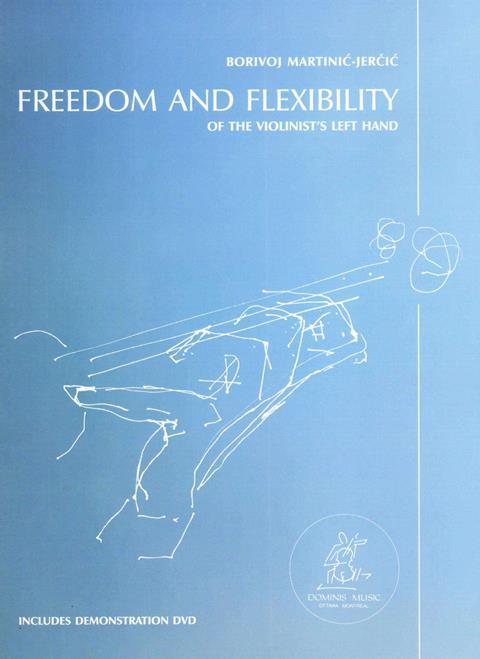Nathaniel Vallois reviews a book of studies designed to improve left-hand technique

Freedom and Flexibility of the Violinist’s Left Hand: Technical Studies for Violin
Borivoj Martinić-Jerčić
106PP (+DVD) ISBN 9780995321502
DOMINIS MUSIC $49
This book consists largely of exercises in scales and arpeggio-cycle patterns, focusing on left-hand shape, shifting, chordal patterns and the interconnectedness of all of these. The spiral-bound pages are pleasingly if simply presented, and are physically convenient to use. The exercises are clearly laid out, ranging in difficulty from relatively basic chromatic steps and diatonic shifting to extreme stretches.
The opening section delves beyond the left-hand aspects, rooting all technical issues in good breathing and a healthy posture, and establishing the fundamentals of the violin’s positioning and the bow hold. This is done succinctly and gets to the point in a way that is positive and principled, but not dryly dogmatic. The author acknowledges different schools of thought and advocates a balanced approach adaptable to the individual but based on key concepts.
Specifically about the left hand, seven key shapes – four for single-note patterns, three for double-stopping – are put forward as a foundation. I wonder why the minor-keyed diatonic hand form (for example in first position on the A string: B – C sharp – D – E) isn’t accompanied by its major counterpart (B – C sharp – D sharp – E) as a distinct hand shape, leading to the most extended one, the whole-tone augmented pattern (B – C sharp – D sharp – E sharp). At any rate, the concrete demonstration of key hand shapes, with the additional aid of photographs, is very useful.
The role of the thumb, essential to good left-hand technique, is central to the book. Examined, for instance, is the concept that the left-hand frame should be set in relation to the fourth ‘pinky’ finger, how this is enabled by the thumb’s position, and how this facilitates double-stopping.
I was a little confused about some of the points regarding the role of the thumb in shifting: the issue of whether the thumb should follow, guide or move in step with the rest of the hand seems to me more complex than discussed here. Overall, however, many valuable points are made and the emphasis on one-finger shifting and chromatic patterns, crucial to the training of an acute ear, is especially important. Also welcome are the patterns incorporating perfect 5ths, juxtaposing double-stops and shifting, and the often neglected 2nds, 7ths and perfect 4ths. Flexibility towards achieving more physically demanding extensions is built up through a combination of chromatic steps and drone-based double-stops.
While the concepts are not in themselves novel – those acquainted with Ruggiero Ricci’s teachings on left-hand technique will notice common ground – the thorough, methodical progression of these exercises provides an excellent tool towards achieving a supple, dexterous left hand and a strong sense of fingerboard geography. Such is the nature of these exercises that they can be tailored to one’s needs for optimal benefit. Elements can already be used with young students learning to shift and develop alert intonation; violinists at a more advanced stage should gradually become closely acquainted with the full range of what this book offers, and it will benefit those at even the highest level.
NATHANIEL VALLOIS









































No comments yet